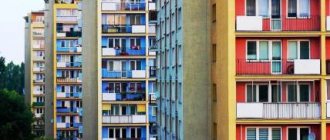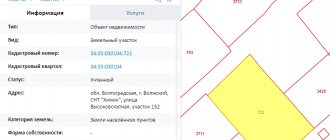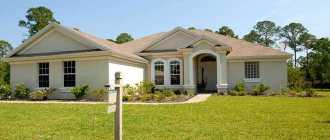Various decisions regarding the property of one apartment building are made jointly by all owners of apartments in this building. For this purpose a vote is held. It can be presented in different forms. It is often not possible to gather all residents in one place to resolve important issues, so the chairman decides to use the in-person and absentee voting method. It involves using two stages to make a decision. Residents of the building must understand how in-person and absentee voting of homeowners is conducted, how all citizens are notified about it, as well as how the notification and protocol are correctly drawn up.
What forms of meetings are held?
The law clearly states the forms in which meetings of residents of the same building can be held. You can use a specific form depending on the situation, which can significantly simplify the voting procedure. The following forms are used by law:
- Full-time. It involves gathering citizens in one place where all important issues are discussed. The main problem with such voting is the difficulty of obtaining an optimal quorum, since many residents are unable or unwilling to attend the meeting. But with direct communication between citizens, it is possible to have a good understanding of all important issues. Every citizen can submit their questions.
- Correspondence. Residents do not meet together, so each citizen expresses his will only through a ballot received from the chairman of the house. Completed documents are submitted by the due date. With the help of such voting, it is possible to obtain votes from a large number of residents. Citizens' time is saved, but there is no opportunity to thoroughly discuss all issues. For such voting, various electronic services are often additionally used, which greatly simplifies the process.
- In-person and absentee voting for homeowners. The procedure involves combining some features of the two above schemes. Initially, a face-to-face meeting is held, which is attended by all residents interested in personal discussion of important issues. The rest of the citizens are given absentee ballots. This method makes it possible to achieve the required quorum, but a lot of time is spent on the procedure.
The specific form is indicated in the announcement of the meeting. If it suddenly changes, then decisions made at such an event are easily invalidated. A meeting is considered competent when the required number of votes, called a quorum, is gathered. Additionally, numerous formalities must be observed. The chairman must have a good understanding of how homeowner voting is conducted in person if this method of decision-making is chosen.
Basic Concepts
According to Article 44 of the Housing Code of the Russian Federation, the general meeting is the main governing body of the house. Residents often consider such a meeting a boring and unnecessary event and do not want to waste time attending it.
But it is their decision, their vote that determines how the house will be maintained, when and to what extent current or major repairs will be carried out.
At this meeting, conflicts with the Management Company, the choice of a form of management, and other issues can be resolved. A biased attitude towards general meetings may be due to the fact that they are poorly prepared by the initiative group or a lot of time of this event is devoted to irrelevant, uninteresting issues.
IMPORTANT! The general meeting should be a planned and pre-prepared event, the main task of which is to resolve a number of issues important for the life of the house.
Among the powers of the OS is resolving issues related to the management of common property, its use, and disposal. It is in the hands of apartment owners that the responsibility for maintaining the technical condition of the building lies.
Owners include those residents of apartments in an apartment building who either inherited housing in it or privatized the living space. But not only they, but also those who are the owners of non-residential premises can take part in the management of the house.
For example, a building may have a retail outlet, and its owner will take part in the management of the building and attend general meetings.
How is a meeting called?
The discussion may be regular or extraordinary. In the first case, a meeting of the owners is usually held annually. Such meetings are required by law. At these meetings, the council of a particular apartment building provides residents with a special report. It contains information about all work performed on the house. Information about the financial condition of the fund is provided.
Extraordinary meetings may be held if necessary. They discuss current and important issues. They are appointed by direct residents or council members. Usually held once every six months or quarter.
To hold a meeting of owners of an apartment building, it is important to properly notify all residents about the planned event. To do this, a written document is drawn up and recorded on information boards located at each entrance of the building. Additionally, such notices can be delivered to each resident personally or placed in mailboxes.
Features of in-person and absentee voting
This method of holding a meeting is becoming increasingly popular due to its numerous advantages. Its parameters include:
- the procedure is performed in two stages;
- the first part is represented by a general meeting of residents, at which all problems are announced and various issues are proposed for discussion, after which all residents who attended this event vote in the standard way;
- Voting does not end there, so the presence of a quorum is not considered an important point;
- the second part is to conduct electronic voting, since all other residents make a decision in absentia;
- the initiators of the meeting designate the time frame within which the remaining residents are required to vote;
- they are notified of which electronic platform this process should be carried out on, and they can also be given paper ballots;
- After voting, votes are counted and a quorum is determined.
After all these stages are completed, the process of making various decisions ends. Usually an optimal quorum is achieved, so there is no need to hold the general meeting several times.
Legislative regulation
To understand how homeowners vote in person and in absentia, it is necessary to take into account the requirements of the law. Basic information is contained in Art. 44.1 LCD. It lists all the possible forms in which a meeting of residents can be held. Among them there is also a part-time and part-time scheme.
Although this procedure takes a lot of time, it is considered the most effective, since the vote of almost every resident of the building is accepted. A ballot will be prepared for people who were unable or unwilling to attend the meeting in person. It may be presented in paper form, but electronic decision-making platforms are increasingly being used.
Organizers
Most often, OSs are organized by members of the house council, its chairman. These people know most about maintenance problems, the technical condition of the building, and the procedure for organizing the event. But any of the apartment owners can draw attention to this or that problem of the house and become the initiator of a general meeting.
To prepare and conduct it, you just need to get acquainted with the standards of housing legislation and carry out this event according to the instructions. First, an announcement is made indicating the time of absentee voting and issues that need to be urgently resolved. You will need to prepare ballots and assemble a counting commission.
If they wish, proactive and responsible citizens who are not indifferent to the fate of their home will be able to properly hold the event and announce the voting results.
Advantages and disadvantages
Members of a homeowners' association often choose the in-person or absentee form of voting. This is due to the numerous advantages of such a scheme. These include:
- it is possible to obtain votes from almost all residents of one building;
- you can receive votes in two different ways, so each apartment owner decides which method is considered the most convenient and acceptable for him;
- ensures that optimal quorum is achieved;
- This method is considered especially convenient if it is necessary to obtain at least 2/3 of the votes of the total number of residents in the building;
- the second stage can often be carried out via the Internet, for which the GIS housing and communal services portal is used, which greatly simplifies the vote counting procedure.
But this scheme also has some disadvantages. These include the fact that the procedure takes quite a lot of time, as it is implemented in two stages. Additionally, council representatives have to count twice.
Preparation for the procedure
Before voting, it is important to properly prepare for this process. Initially, council members must understand how absentee voting of homeowners is conducted, which allows them to study the features of this process. To do this, it is advisable to study federal and local regulations.
Next begins the actual preparation, which consists of performing the following actions:
- all issues that will be discussed at the meeting are determined;
- a notice is drawn up on the basis of which all residents are notified of the meeting;
- an absentee voting ballot for homeowners is being prepared, containing all the issues that will have to be resolved during the event;
- Residents are informed about the event 10 days before the appointed date, for which registered letters are usually used, but other methods can also be used, for example, personal delivery of a notice against signature or posting notices on information boards.
After this, the actual procedure begins on the appointed day. A sample ballot paper can be viewed below.
Mandatory requirements
The following requirements apply to holding an absentee meeting.
- Decisions must be recorded in writing.
- The voting form must contain accurate information about the owner of the property who participated in the absentee meeting, as well as information on documents confirming ownership. Important information - decisions on each issue on the ballot. To do this, you need to put “for”, “against”, “abstained” in the appropriate column.
All voting decisions must be clearly and accurately interpreted, without any ambiguity. Homeowners in apartment buildings should know until what date they can bring completed ballots, when they can (and where) find out the results of voting in their home.
If apartment owners have not submitted their “yes” or “no” ballots before the specified time, they will not be considered as those who took part in the vote.
Rules for drawing up a notification
When generating a notification, the following information must be entered:
- chosen form of meeting;
- the immediate date of implementation of this event;
- address of the meeting;
- Full name of the initiator of the procedure;
- a list of issues to be discussed at the meeting;
- the period during which absentee voting is carried out;
- information about the electronic resource with which the process will be performed.
A sample notice can be viewed below.
Bulletin: content and structure
A ballot must be used to collect votes. What does it consist of:
- Full name of the person and his address.
- Details of the document confirming his right to own the living space.
- Share in the apartment, square meters.
- List of questions with possible answers: “yes”, “no”, “abstained”.
- Number and signature.
This form of meeting makes it possible to personally attend a discussion of topical issues at home, while you can cast your vote in absentia. At the moment, this is the most convenient and effective option for holding meetings for both the initiative group and residents.
Hosting an event
On the appointed day, a meeting is held, represented by the first stage of voting. To do this, perform the following steps:
- all citizens who attended the meeting are registered;
- the secretary and members of the commission are elected, as well as the chairman of the event;
- all issues discussed are announced;
- direct discussion is held;
- questionnaires are handed in at the end of the event;
- the results are summed up after receiving the ballots, for which a protocol for the OSS MKD is drawn up.
Then, absentee voting takes place within 10 days. All citizens who were unable to attend the meeting vote on the selected electronic platform. After this, a protocol is drawn up listing all decisions made.
A sample minutes of a meeting of homeowners of an apartment building can be studied below.
When can a decision be considered made?
According to the general rule, the minutes of the general meeting can be signed if a majority of votes of citizens-owners of the premises were cast for one or another option. This applies to those issues that do not relate to the peculiarities of managing property of a common house type.
In some cases, the housing codification act requires a qualified majority (two-thirds of all votes). We are talking about the following questions:
- The decision to reconstruct a house, which can be classified as an apartment building, making decisions about the construction of utility buildings, capital repairs.
- The decision to determine the method of forming a general fund that manages capital repairs, the amount of contributions for capital repairs, the minimum size of the fund itself, and so on.
- Decisions on the limits of use of the land plot on which the dwelling is located, establishing restrictions on the use of such a plot.
- Decisions on the specifics of the use of common property of apartment owners by other persons, concluding agreements for the use of advertising-type structures.
How are the results summed up?
To sum up the results, the votes of all residents who voted in person or absentee are added up.
The results are entered into the protocol, and then published on the official website of a particular house. To correctly draw up a document, it is recommended to use a sample protocol of a meeting of homeowners of an apartment building.







